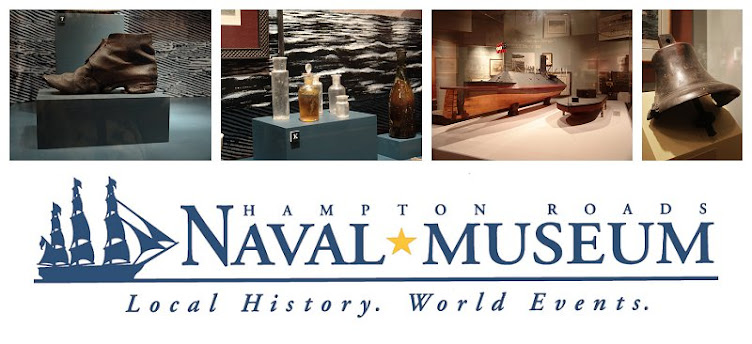 |
| USS Monitor defends Minnesota during the Battle of Hampton Roads, March 9, 1862 (U.S. Navy) |
By Zach Smyers
HRNM Educator
When the smoke cleared and the cannonade ceased on March 9, 1862, the wooden frigate USS Minnesota was still standing and the Battle of Hampton Roads was over. During the battle, Minnesota had gotten stuck on a sandbar, and the ship suffered heavy damage and several casualties from the attacking ironclad CSS Virginia. Due to the arrival of the ironclad USS Monitor, Minnesota was spared a fate similar to its fellow wooden ships, USS Cumberland and USS Congress, which were both sunk on the first day of the battle. Minnesota was successfully removed from the sandbar on March 10, 1862. The ship received much-needed repairs and returned to duty, serving as the flagship of the Atlantic Blockading Squadron.
Built at the Washington Navy Yard, Minnesota was high-tech for its time. Minnesota had two engines operated by four boilers, as well as a full complement of sails known as a “ship rig.” This allowed Minnesota to reach a top speed of 12.5 knots (approximately 14 mph). Initial construction of the ship began in 1854. It was launched on Dec 1, 1855, and commissioned on May 21, 1857. The newly commissioned USS Minnesota, classified as a Steam Frigate 1st Class of the Merrimack class (interestingly, the same class as the renamed CSS Virginia), displaced 4,833 tons, had a length of 264 feet 9 inches, a beam of 51 feet 4 inches, and a draft of 23 feet 10 inches. The ship’s crew consisted of 646 officers and enlisted sailors. Armament included two 10-inch guns, twenty-eight 9-inch guns, and fourteen 8-inch guns.
 |
| USS Minnesota (Naval History and Heritage Command) |
After the Battle of Hampton Roads, Minnesota experienced its fair share of action. On April 14, 1863, Minnesota participated in the Battle of Suffolk. During this battle, four Sailors from Minnesota earned the Medal of Honor while temporarily assigned to USS Mount Washington. While operating on the Nansemond River on April 14, 1863, Mount Washington lost propulsion after its boilers were destroyed by Confederate gunfire. Despite being dead in the water, the Sailors from Minnesota manned a 12-pound howitzer and returned fire for six hours.
The following year, during the December 1864 Battle of Fort Fisher in Wilmington, North Carolina, Minnesota provided gunfire support against Confederate positions located inside the fort. In addition to this, Minnesota contributed 240 men to the landing force during the second battle, which took place from January 13 to January 15, 1865. The second assault on Fort Fisher was successful, and the Union was able to shut down a vital port that had supported the Confederate war effort.
After the Civil War, Minnesota was decommissioned on Feb 16, 1865, in Portsmouth, New Hampshire. The ship was re-commissioned in June 1867 to help train midshipmen during a cruise to Europe. On January 13, 1868, Minnesota was placed in reserve at the New York Navy Yard. The ship was re-commissioned again on June 12, 1875 and served as a gunnery and training ship for naval apprentices. The ship would serve in this capacity for the next twenty years.
 |
| USS Minnesota with its signal flags flying (Naval History and Heritage Command) |
In 1895, Minnesota was loaned to the Massachusetts Naval Militia. This would be the ship’s last duty station prior to being sold to Thomas Butler & Co. of Boston in August 1901. Minnesota’s name was stricken from the Navy register so it could be used again on a brand-new battleship (BB 22), and the original Minnesota was burned at Eastport, Maine, to salvage its iron fittings. USS Minnesota represented its namesake state in a proud manner during its Navy career. It fought gallantly during the Battle of Hampton Roads, and despite being stuck and unable to move, the Sailors on Minnesota never gave up. Their determination and fighting spirit lived up to the Navy’s core values of honor, courage, and commitment. These values were represented again by Minnesota Sailors during the Battle of Suffolk and the Battle of Fort Fisher. It is appropriate that a fighting ship like Minnesota was used later in its life to train future Sailors before they joined the fleet.







